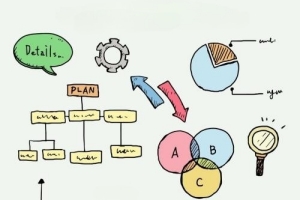Successful Handovers
Starting a new role can be equally exciting and stressful. New employees will want to give a great first impression and, as a manager, you’ll want your new team member to be able to hit the ground running.
But, without a successful handover, new starters may be confused about what’s expected of them and may stumble before they’ve even had a chance to prove themselves.
A handover includes all the essentials an employee needs to get started in their new role, from key responsibilities, software, and organizational charts, to more detailed intel, such as who to go to for particular problems. A successful handover will help a new starter to quickly take ownership of their role and responsibilities.
As a manager, it’s your responsibility to ensure that your team member has the right tools and support from day one. So, let’s take a look at some things you can do to ensure successful handovers in your team.
First, create an accurate job description. Consult the previous job holder and other team members to ensure that it accurately describes the role, including core tasks, key performance indicators, and anyone they’ll be managing. Be sure to include any organization-specific training they’ll need to do, such as in-house software or equipment training.
Now that you’ve put together an overview of the role, it’s time to get into the specifics. What regular deadlines will they need to meet? What will their daily schedule look like? Which suppliers and clients will they be responsible for? These details will be essential to helping your new colleague settle quickly and seamlessly into the team.
Next, plan their first week. A proper induction is essential to helping your new team member understand how they fit into the wider organization. Compile a pack of useful documents, such as team structures, their job description, and company handbooks. Be careful not to bombard them with all this information at once though. Give them time to process what they’ve learned and set aside some time to go over any important topics throughout the week.
If possible, make time for your new hire to shadow their predecessor. Encourage them to take on some tasks, so they can put their newfound knowledge into practice. Of course, if this is a new position or their predecessor has already left, then shadowing won’t be an option. In this case, monitor their progress closely and schedule regular catch-ups to answer any questions they may have.
Finally, gather and share useful information. Your team members will undoubtedly have developed valuable in-depth knowledge about their work, clients and industry. Encourage your team to share this information with their new colleague and signpost other important sources of information, such as organization newsletters, intranets, or shared drives.
A successful handover is not only crucial in helping your new team member to settle into their new role, but also encourages team bonds of trust and support to flourish right from the start.















